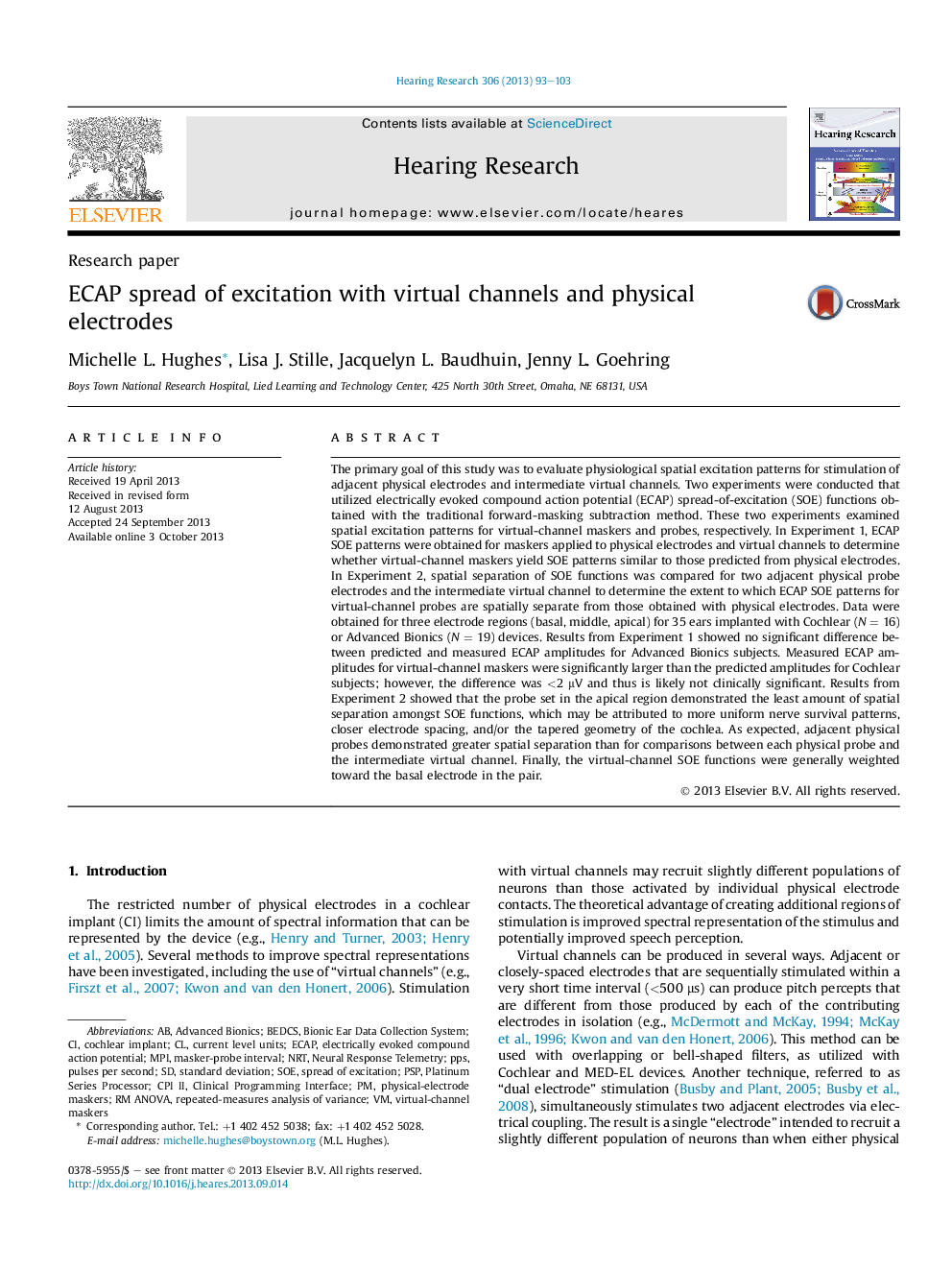| کد مقاله | کد نشریه | سال انتشار | مقاله انگلیسی | نسخه تمام متن |
|---|---|---|---|---|
| 4355165 | 1615594 | 2013 | 11 صفحه PDF | دانلود رایگان |
عنوان انگلیسی مقاله ISI
ECAP spread of excitation with virtual channels and physical electrodes
دانلود مقاله + سفارش ترجمه
دانلود مقاله ISI انگلیسی
رایگان برای ایرانیان
کلمات کلیدی
MPIPSPNRTECAPSOERM ANOVA - ANOVA RMPps - PPSstandard deviation - انحراف معیارrepeated-measures analysis of variance - تجزیه و تحلیل واریانس تکرار می شودNeural response telemetry - تله متری پاسخ عصبیpulses per second - پالس در ثانیهelectrically evoked compound action potential - پتانسیل عمل ترکیب الکتریکی باعث شده استCochlear implant - کاشت حلزونی
موضوعات مرتبط
علوم زیستی و بیوفناوری
علم عصب شناسی
سیستم های حسی
پیش نمایش صفحه اول مقاله

چکیده انگلیسی
The primary goal of this study was to evaluate physiological spatial excitation patterns for stimulation of adjacent physical electrodes and intermediate virtual channels. Two experiments were conducted that utilized electrically evoked compound action potential (ECAP) spread-of-excitation (SOE) functions obtained with the traditional forward-masking subtraction method. These two experiments examined spatial excitation patterns for virtual-channel maskers and probes, respectively. In Experiment 1, ECAP SOE patterns were obtained for maskers applied to physical electrodes and virtual channels to determine whether virtual-channel maskers yield SOE patterns similar to those predicted from physical electrodes. In Experiment 2, spatial separation of SOE functions was compared for two adjacent physical probe electrodes and the intermediate virtual channel to determine the extent to which ECAP SOE patterns for virtual-channel probes are spatially separate from those obtained with physical electrodes. Data were obtained for three electrode regions (basal, middle, apical) for 35 ears implanted with Cochlear (N = 16) or Advanced Bionics (N = 19) devices. Results from Experiment 1 showed no significant difference between predicted and measured ECAP amplitudes for Advanced Bionics subjects. Measured ECAP amplitudes for virtual-channel maskers were significantly larger than the predicted amplitudes for Cochlear subjects; however, the difference was <2 μV and thus is likely not clinically significant. Results from Experiment 2 showed that the probe set in the apical region demonstrated the least amount of spatial separation amongst SOE functions, which may be attributed to more uniform nerve survival patterns, closer electrode spacing, and/or the tapered geometry of the cochlea. As expected, adjacent physical probes demonstrated greater spatial separation than for comparisons between each physical probe and the intermediate virtual channel. Finally, the virtual-channel SOE functions were generally weighted toward the basal electrode in the pair.
ناشر
Database: Elsevier - ScienceDirect (ساینس دایرکت)
Journal: Hearing Research - Volume 306, December 2013, Pages 93-103
Journal: Hearing Research - Volume 306, December 2013, Pages 93-103
نویسندگان
Michelle L. Hughes, Lisa J. Stille, Jacquelyn L. Baudhuin, Jenny L. Goehring,